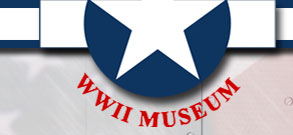Model Designation
Odd
looking and finicky to fly, the Ryan
PT-22 offered a challenge to cadet
pilots that the Boeing PT-17 (N2S-4)
or the Fairchild PT-19 did not. The
PT-22 was known for its demanding
ground handling characteristics.
Though not as successful or as well
known as the PT-17 or the PT-l9, the
Army Air Force utilized the PT-22 as
a primary trainer throughout World
War II and, today, the aircraft is
sought after by warbird collectors
around the world.
Designer Claude Ryan became famous
following the success of Charles
Lindbergh's Trans-Atlantic flight.
Yet, despite the fame and attention
that the “Spirit of St. Louis”
brought to the Ryan Aeronautical
Company, Ryan decided to concentrate
more on building his flight training
schools rather than additional
aircraft. By 1933, however, Ryan was
once again designing aircraft and
introduced a low-wing monoplane with
fixed landing gear, the
Sport-Trainer (more commonly
referred to as the “Ryan ST”). The
ST became a force in the home and
export market
History
In 1940, with America's entrance
into World War II only months away,
the U.S. Army Air Corps (AAC)
evaluated a ST (called the XPT-16 by
the AAC) and ordered 100 for use as
primary trainers. Fitted with a
powerful Kinner radial engine, the
XPT-16 went through a number of
different variants before the
definitive PT-22 entered service.
Considered similar in layout, the
PT-22 differed from earlier versions
in that it was not equipped with
faired landing gear or wheel spats.
A total of 1,043 PT-22s were built
for the AAC, with an additional 100
NR-1 aircraft purchased by the U.S.
Navy, and 25 purchased by the Dutch
(these aircraft were later turned
over to the AAC as the PT-22A ). Not
surprisingly, most AAC PT-22s served
at Ryan-operated training schools
that were contracted by the AAC to
provide primary pilot training to
Army cadet pilots.
The PT-22 on display was
manufactured by Ryan Aircraft in San
Diego, California and was received
by the U.S. Army Air Corps on
November 13, 1941. It was then
transferred to the Fifth Elementary
Flying Training Detachment (36th
Flying Training Wing, AAC Flying
Training Command), Ryan School of
Aeronautics, Helmet, California. It
was based at Helmet until April
1944, when it was transferred to the
4847th Army Air Force (AAF) Base
Unit (Specialized Depot, Air
Technical Service Command), State
Fairgrounds, Springfield, Illinois.
In September 1944, the aircraft was
transferred to the 4126th AAF Base
Unit (A.T.S.C.), San Bernardino AAF
Base, California and disposed of as
surplus.






